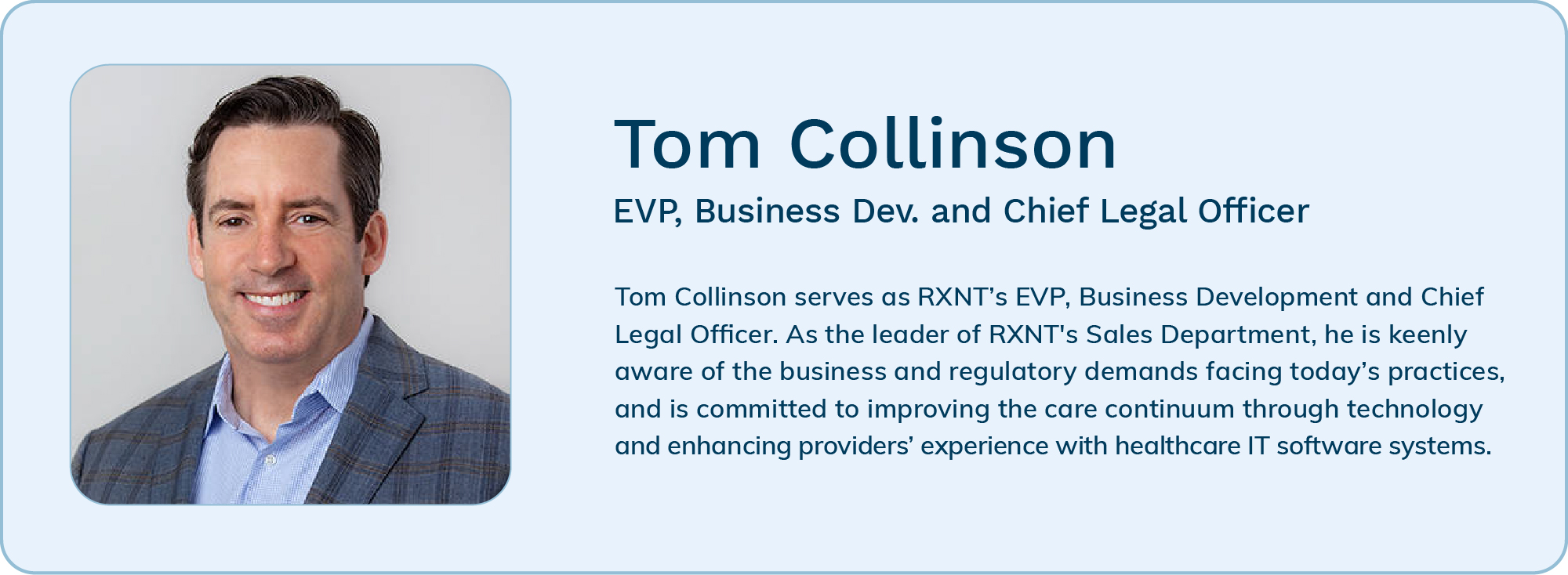The financial aspect of software selection can be one of the most challenging parts of the process. However, it’s possible to successfully navigate this maze of pricing models and features to establish a realistic budget that delivers the solutions your practice needs.
Implementing a new clinical software solution can be an exciting prospect, bringing with it the potential to improve patient care and enhance operations. But for many practices, the excitement wanes as they move past the exploration stage and start the financial planning process. Uncertainty creeps in as they work to determine what features are must-haves and what price range is truly reasonable in a market filled with opaque pricing.
If you’ve grappled with a similar situation, you’re not alone. The financial aspect of software selection can be one of the most challenging parts of the process. The lack of clarity amongst many software providers around costs and capabilities only exacerbates the situation. However, it’s possible to successfully navigate this maze of pricing models and features to establish a realistic budget that delivers the solutions your practice needs.
In this article, we’ll demystify the budgeting process for clinical and practice management software solutions by sharing practical strategies to identify your needs, determine your medical practice software budget, and ensure your technical investments align with your operational goals.
Understand Your Software Needs
First, you need to clarify what kind of software and features your practice needs. Setting up your must-haves will help you narrow down your budget. Consider the following potential features your practice may need—these essential features can help you narrow down where to make investments:
- Integration: You’ll want to ensure your chosen software solution is fully integrated so you can easily access patient data and optimize workflows.
- Patient portal: An intuitive patient portal is key for allowing patients to securely communicate with providers, update information, access health information, and schedule appointments. It also allows patient to quickly make payments online, generating more revenue for the practice.
- Telehealth: Depending on your practice, you may want to consider telehealth capabilities to offer greater flexibility and convenience for patients.
- Billing and claims management: Look for automated billing processes to ensure that insurance verification, claim submission, tracking, rejections, and denial management/appeals are all easy to manage, thereby streamlining your revenue cycle.
- Reporting: Reporting and analytics features can help you track performance, uncover trends, and plan for improvements.
Consider Financial Resources and Potential ROI
Next, take a close look at your practice’s operating costs to consider how much you can allocate for software expenses. It’s important to factor in the time and resources you can save by boosting efficiency. As you improve workflows, you can generate significant savings in the long run.
Here are some operating costs to consider:
- Number of providers: More providers may mean more seats with your software license or more robust capabilities. Some software providers, like RXNT, offer enterprise-level discounts for high numbers of licenses.
- Number of providers with Electronic Prescribing of Controlled Substances (EPCS) requirements: Ensure your software supports EPCS requirements to meet compliance.
- Number of non-clinical staff: Factor in the number of total staff who will use the software. For example, some platforms charge additional fees for extra. Some, like RXNT, do not charge for any supporting staff who do not sign encounter notes or send prescriptions.
- Number of claims processed: Higher volumes of claims may require more advanced claims management and/or billing features, and may also impact how much you’ll have to pay for your software. RXNT helps accommodate this by offering a variety of subscription plans to accommodate low and high-volume claims processing.
Gather Options and Compare Costs
Then, gather some options based on your pre-defined requirements and budget. During this step, you’ll connect with multiple platforms to compare features and pricing. Be sure to evaluate the importance of each feature against its cost to determine the value you’re receiving from your investment.
This is the time to ask in-depth questions about the offerings to get a full picture of the features and total costs. Some areas often missed by practices during this stage are:
- Setup fees: Any initial costs for implementation should be factored into the budget.
- Training costs: Add any expenses to onboard your staff and get them up to speed.
- Ongoing support: Be sure to ask if ongoing customer support is included in the price.
For example, some software platforms charge additional fees for training and live support. AT RXNT, we do not charge for setup, training, or ongoing support.
At RXNT, we prioritize transparent pricing and offer free setup, training, and support to prevent unexpected expenses in your software budget.
Continue to Monitor Costs and Performance
Once you select and implement your software, it’s essential to continuously monitor costs. Look at your ongoing operating costs and revenue cycle management (RCM) to ensure your software is delivering a return on investment. By regularly assessing these figures, you can ensure that your software is meeting needs and driving improvements simultaneously.
With careful planning, you’ll arrive at a medical practice software budget that meets your financial and operational goals. Our team at RXNT can help you navigate this process with affordable cloud-based solutions, offered a-la-carte or as a comprehensive suite with predictable pricing on a per-provider basis. No matter which options you choose, you’ll receive 24/7 cloud-based access, premium in-house support, and regular system upgrades at no additional cost.





